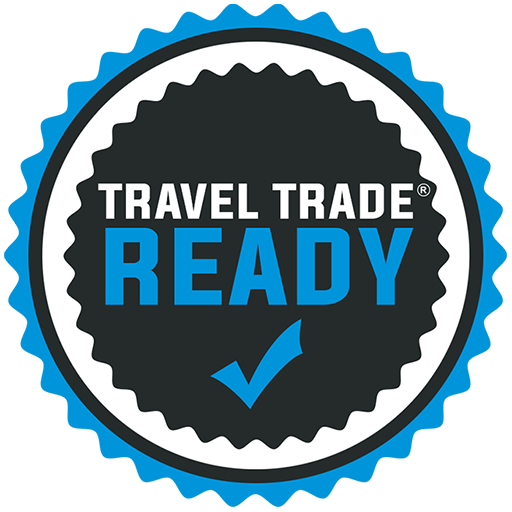What is Travel Trade Marketing? TTR Explains
A key first step in explaining travel trade marketing, is answering the question ‘what is travel trade marketing?’ In brief, it is pivotal in connecting travellers with destinations and experiences through strategic promotion and collaboration – but this article will delve deeper – exploring what travel trade marketing entails, its key components, impact on tourism promotion, strategies employed, benefits for stakeholders, and future trends.
What is Travel Trade Marketing? TTR Explains
Understanding Travel Trade Marketing
Travel trade marketing refers to the strategies and activities used to promote travel destinations and services to travel agents, tour operators, and other intermediaries who facilitate travel bookings. It focuses on building relationships and partnerships within the travel industry to attract tourists and enhance destination visibility.
What is Travel Trade Marketing? TTR Explains
Key Components of Travel Trade Marketing
The primary players in travel trade marketing include travel agents, tour operators, destination management companies (DMCs), and online travel agencies (OTAs). These entities work together to package and promote travel products and services, ensuring that travellers have access to diverse and appealing travel options. Through strategic collaborations and innovative marketing campaigns, they play a vital role in shaping the travel experiences available to consumers worldwide.
What is Travel Trade Marketing? TTR Explains
The Impact of Travel Trade Marketing on Tourism Promotion
Travel trade marketing significantly boosts tourism promotion efforts by:
- Increasing destination visibility through targeted marketing campaigns.
- Driving tourist traffic by promoting unique attractions and experiences.
- Enhancing destination branding and reputation, making it more appealing to travellers worldwide.
What is Travel Trade Marketing? TTR Explains
Strategies for Successful Travel Trade Marketing
Effective strategies in travel trade marketing include:
- Digital marketing campaigns that utilise SEO, social media, and online advertising to reach travel agents and potential tourists.
- Partnership and collaboration initiatives with airlines, hotels, and local attractions to create comprehensive travel packages.
- Content marketing efforts that highlight the unique features and experiences of a destination to attract interest and bookings.
What is Travel Trade Marketing? TTR Explains
Benefits of Travel Trade Marketing
There are various benefits to travel trade marketing, which involves promoting travel products and services through industry channels such as travel agents, tour operators, and wholesalers, extending to various stakeholders. For example:
- DMOs gain increased exposure and bookings, boosting local economies.
- Suppliers such as hotels and attractions benefit from increased bookings and revenue.
- Travel agents and tour operators access diverse travel products, enhancing their offerings to clients.
What is Travel Trade Marketing? TTR Explains
Travel Trade Marketing In Practice: A Hypothetical Example
Successful travel trade marketing campaigns include partnerships between destinations and influential travel agencies, showcasing the destination’s unique offerings and attracting a broader audience. For instance, collaborations that integrate local experiences with digital storytelling have proven effective in capturing the interest of modern travellers. These campaigns not only highlight cultural authenticity but also leverage social media and online platforms to reach a global audience and drive bookings. This approach exemplifies successful travel trade marketing, highlighting cultural authenticity and leveraging social media and online platforms to reach a global audience and drive bookings.
What is Travel Trade Marketing? TTR Explains
Challenges and Considerations
Known challenges in travel trade marketing include economic fluctuations, regulatory changes, and the need for continuous adaptation to technological advancements and consumer preferences. Navigating these challenges requires agile strategies and proactive industry collaboration to maintain competitiveness in a dynamic market landscape. Furthermore, understanding regional nuances and cultural sensitivities is crucial for effectively engaging diverse markets and sustaining long-term relationships with travel partners and consumers alike.
What is Travel Trade Marketing? TTR Explains
Future Trends in Travel Trade Marketing
Future trends in travel trade marketing include:
- Integration of artificial intelligence (AI) and machine learning to personalise travel experiences.
- Emphasis on sustainable tourism practices to meet growing consumer demand for eco-friendly travel options.
- Continued growth of digital platforms and mobile apps for booking travel services.
What is Travel Trade Marketing? TTR Explains
Conclusion
In conclusion, travel trade marketing is instrumental in promoting destinations and facilitating travel experiences worldwide. By leveraging partnerships, digital strategies, and innovative approaches, stakeholders in the travel industry can maximise their impact and meet the evolving needs of travellers. As technology continues to advance and consumer preferences shift, the role of travel trade marketing in shaping the future of tourism promotion remains pivotal.
For more insights into travel trade marketing strategies and industry trends, visit these pages explaining why DMO’s suppliers and buyers need our API, or contact us to discuss how effective marketing can elevate your destination’s appeal and attract more tourists.


